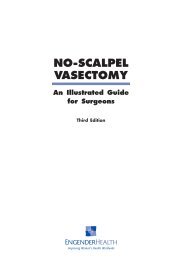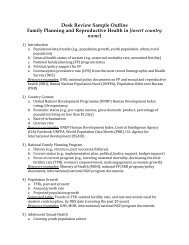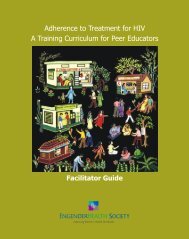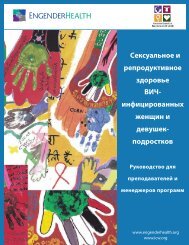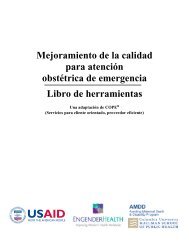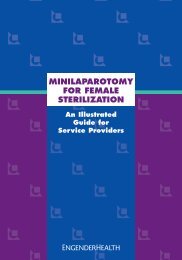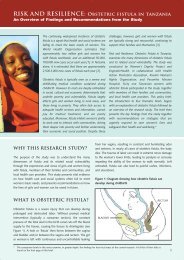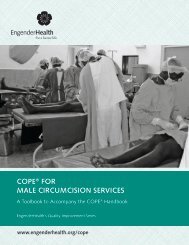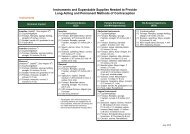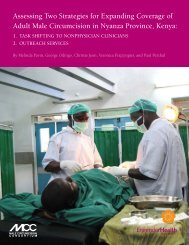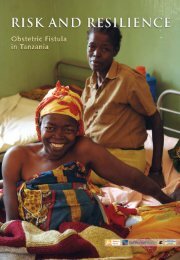Help-Seeking Pathways and Barriers for ... - EngenderHealth
Help-Seeking Pathways and Barriers for ... - EngenderHealth
Help-Seeking Pathways and Barriers for ... - EngenderHealth
Create successful ePaper yourself
Turn your PDF publications into a flip-book with our unique Google optimized e-Paper software.
2. Common Structural <strong>Barriers</strong><br />
Gender inequality is perhaps the most pervasive structural barrier that Tanzanian women<br />
experience across multiple domains of their lives. Many of the socio-cultural barriers<br />
described above—women’s economic dependency, societal norms that undermine women’s<br />
agency <strong>and</strong> dictate acceptable behaviors, expectations around marriage, etc.—contribute to<br />
gender inequality at the macro-level. Inequality systemically constrains women’s options <strong>for</strong><br />
responding to violence (<strong>and</strong> also propagates GBV in the first place).<br />
The interviews <strong>and</strong> participatory focus groups also revealed a more specific set of structural<br />
barriers affecting survivors of GBV in the study areas. Cost, corruption, distance, gaps in<br />
services, <strong>and</strong> lack of quality care were commonly reported by participants as posing<br />
significant barriers <strong>for</strong> GBV. This sub-section describes these findings as they relate to both<br />
help-seeking <strong>and</strong> service delivery.<br />
Poverty <strong>and</strong> inability to pay<br />
Respondents offered compelling testimony on the multitude of ways in which costs curtail<br />
help-seeking <strong>and</strong> also negatively influence a woman’s ability to obtain services.<br />
Respondents identified both direct costs (e.g., costs of registering at the hospital <strong>and</strong><br />
receiving treatment) <strong>and</strong> indirect costs (e.g., transport fees, costs of medical supplies, etc.).<br />
These costs act as a structural barrier that cuts across provider types including the local<br />
government, police, <strong>and</strong> healthcare system. The excerpts below demonstrate the<br />
pervasiveness of cost as a barrier to seeking help <strong>for</strong> GBV. The final quote in the series<br />
below further illustrates some of the hidden costs that further reduce the af<strong>for</strong>dability of<br />
obtaining care, especially <strong>for</strong> poor <strong>and</strong>/or economically dependent women. These are in<br />
addition to indirect costs such as transport, which can be prohibitively high, especially in<br />
rural areas.<br />
Few of them [seek help] because of their education level, <strong>and</strong> the second thing is that …<br />
a person is unable to cover the financial costs. Thus many of them just end up maybe<br />
saying, “ If I go there, I will be asked to pay <strong>and</strong> I do not have any money.” That also is<br />
an obstacle <strong>for</strong> people when seeking help.<br />
Service provider, Dar es Salaam<br />
There are also challenges at a police station. Yes, they might ask <strong>for</strong> some money… [if]<br />
she doesn’t have a single cent, what will she do<br />
Female PFG participant (18-24 years old), Dar es Salaam<br />
Nothing is <strong>for</strong> free, from the card, medications, syringes—even the intravenous<br />
infusions—have to be bought.<br />
Female PFG Participant (18-24 years old), Dar es Salaam<br />
<strong>Help</strong>-<strong>Seeking</strong> <strong>Pathways</strong> <strong>and</strong> <strong>Barriers</strong> <strong>for</strong> Survivors of GBV in Tanzania March 2013<br />
Page 45



